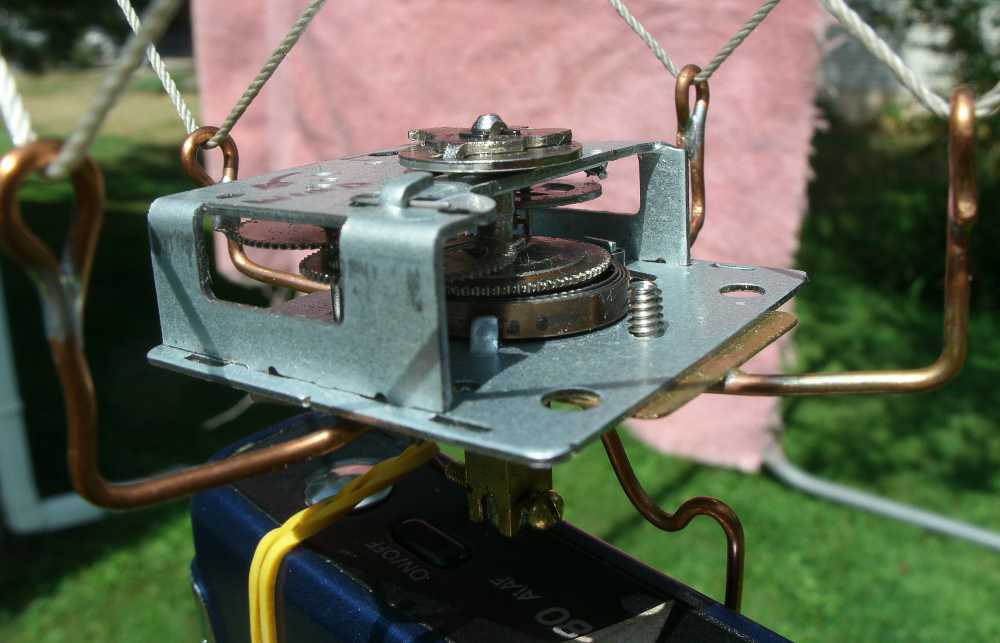 .
.
After the kite is far up in stable air, hang the camera on the kite string,
and then let out lots of string to move it all higher.
A modern self leveling GPS equipped quad copter could be useful for aerial pictures,
but 'the wind is free'
and I am not limited by the cost and relatively short life of quad copter battery power.
About the time that quad operators go home because the wind is getting bothersome,
I am starting to fly a kite. I can safely send the kite over water and places where I would be scared to send a quad.
(I don't have a high quality quad)
And I go higher with a kite than I usually fly a quad copter.
Sometimes I use a Rokkaku kite, and some people say it is so steady that they thought it was a balloon, and not the wild kites that they flew when they were kids.

|
I don't need a clock device to rotate a camera, but it is an easy way to get enough pictures and to be sure some are pointed at a subject. (I don't use remote viewing bluetooth methods, that would add weight, and I can go beyond its range) If the wind is consistent and the camera stays within 20 feet of the same place while it hangs on the kite string, I can get enough pictures side-by-side that can be stitched into panoramic or wide views by using a photo program afterwards. My previous clock picavet had a one-hour timer, for one turn. That's a long time to wait. The wind is not steady enough for that long to guarantee good picture alignment for panoramics.
The original factory 15-minute clock wound timer has 15 minutes in 3/4 of a turn. When the clock is taken away from the electrical enclosure and its switch, the clock shaft actually turns 20 minutes for one turn. And it can make more than one turn; this one can make 4 turns before the spring is all wound down.
I can use my old GE camera which has a timer that takes a picture every 30 seconds.
The best part about this clock is it weighs just over an ounce, that's very light for such a useful gadget.
Compare that to the 6 ounces of my Saturn Orbit Sprinkler Panoramic device, link:
|
 .
.
|
The camera is hung by a 2-wires soldered to a square tube. The tube slides over the shaft of the clock. I cut 4 notches in the square tube, so I can raise the tube and rotate it to a different quadrant. This lets me position the final resting place of the camera direction when the spring is all wound down and the camera stops turning. Even if the camera isn't turning, it can still get pictures. |
 .
.

Here's a set of pictures stitched together, and not cropped yet. It is over 180 degrees of view along a straight highway, US 51 / I-39.
The wind must have shifted on the right, you can see the jog in the edges that I haven't cropped away yet.
This is the flat sand country east of Plover, Wisconsin. The largest green bean cannery in the world is here.
The large half-mile green circle is from a center-pivot irrigation sprinkler.

To My Main Index Page on the TrainWeb site.
This page was filmed and wrote in August, 2020